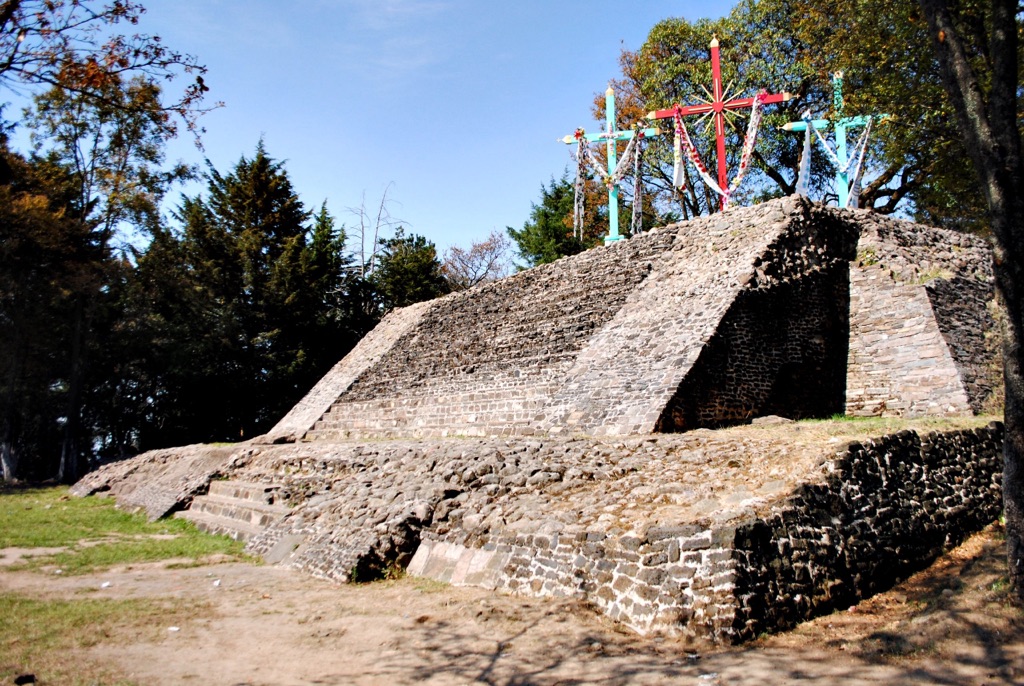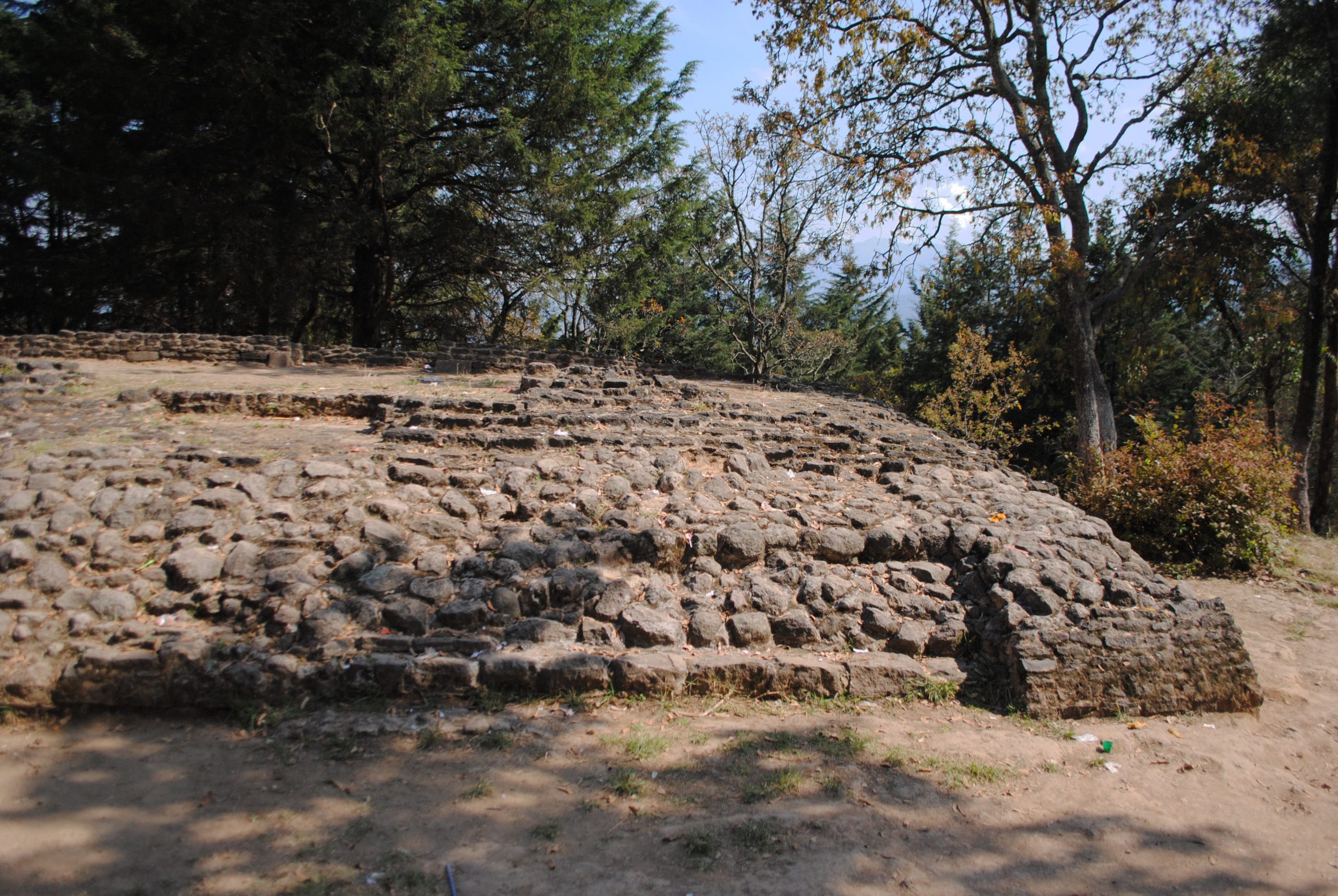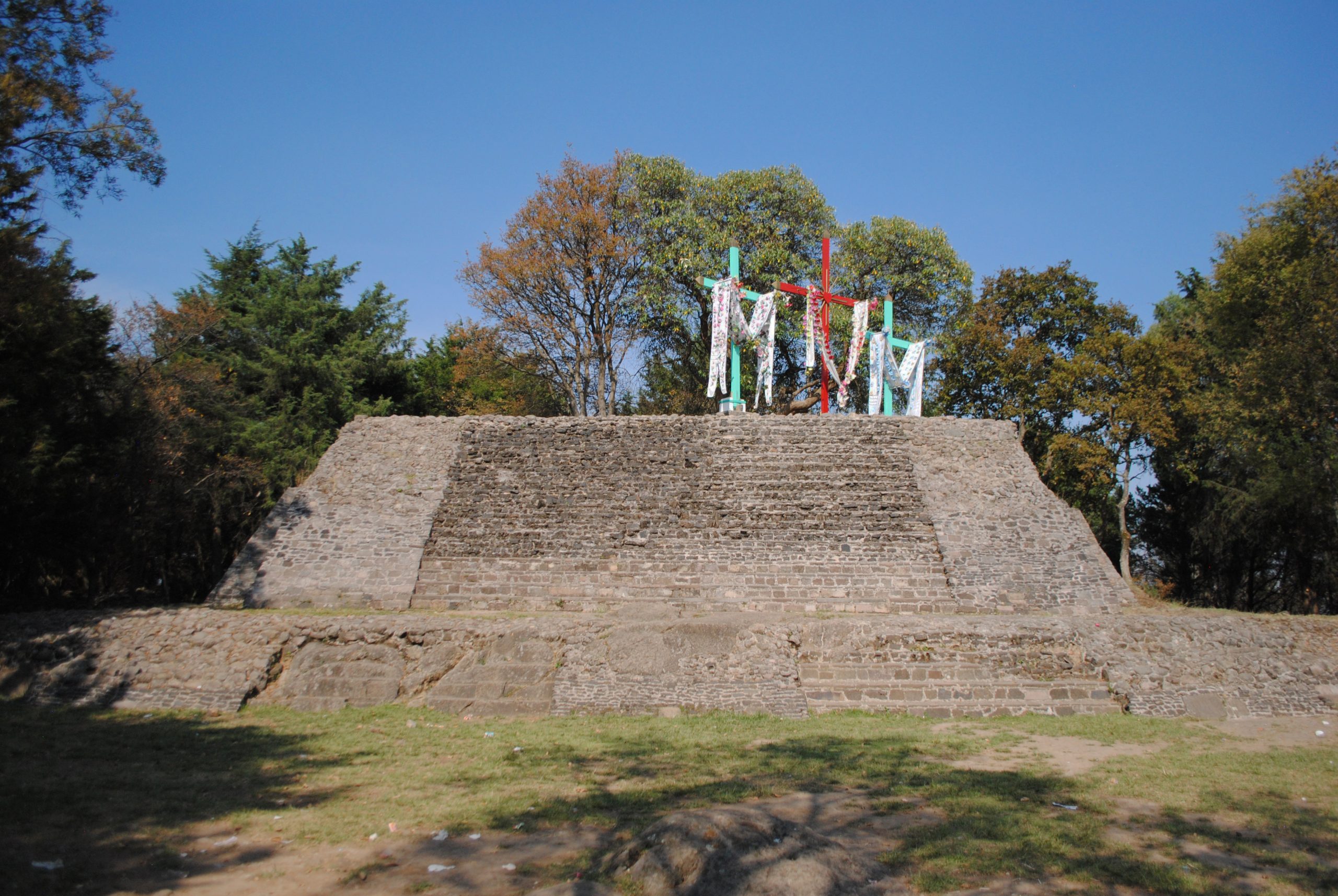The Historical and Cultural Significance of Cerro del Judío
Cerro del Judío, also known by its ancient name Mazatepetl, which translates to “Hill of the Deer” in Nahuatl, is a mountain steeped in history and cultural significance. Located in the Magdalena Contreras municipality of Mexico City, this site is not only a natural wonder but also a testament to the rich pre-Columbian heritage of the region.
Get your dose of History via Email
The Archaeological Site
At an elevation of 2,750 meters above sea level, the summit of Cerro del Judío houses an Otomí archaeological settlement. This settlement is notable for its pyramid, which dates back to the year 1200. The pyramid features a unique staircase adorned with a carving of a turtle with jaguar claws, symbolizing the fertility of the surrounding farmland. This site is also associated with the worship of Ehécatl, the Aztec god of the wind, highlighting the religious significance of the location to the indigenous peoples.
Adjacent to the pyramid is a ceremonial center, with artifacts dating from 1200 to 1380 A.D. The National Institute of Anthropology and History (INAH) initiated the recovery of this space in the year 2000, under the direction of archaeologist Francisco Rivas. Rivas suggests that the site was likely constructed by Tepanec groups, who inhabited the area during the era of the Triple Alliance, comprising Tlacopan, Texcoco, and Azcapotzalco.

Cultural and Religious Celebrations
Cerro del Judío, also known as Cerro de las Tres Cruces due to the three crosses placed at its summit, plays a significant role in the local Christian community. Every year during Holy Week, residents gather to commemorate the sacrifice of Christ and celebrate Saint Barnabas, the patron saint of the nearby town of San Bernabé Ocotepec. This blending of pre-Columbian and Christian traditions underscores the layered history of the site.
Conservation Efforts and Ecotourism
Recognizing the historical, cultural, and natural value of Cerro del Judío, the Magdalena Contreras delegation and the Natural Resources Commission have designated it as a protected Natural Area. This designation has paved the way for the establishment of the Cerro Mazatepetl Ecotourism Center, which offers guided tours, classes, and workshops in alternative medicine. The center is highly regarded for its breathtaking views and the variety of outdoor and nature-related activities available, making it a cherished destination for both locals and tourists.

Conclusion
Cerro del Judío, or Mazatepetl, is a remarkable site that encapsulates the rich tapestry of Mexico’s pre-Columbian past, its colonial history, and its contemporary efforts to preserve and celebrate this heritage. As a place of archaeological significance, religious importance, and natural beauty, it stands as a testament to the enduring spirit and resilience of the peoples who have called this land home.

